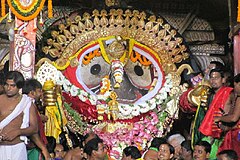
Jagannatha is a deity worshipped in regional Hindu traditions in India as part of a triad along with his (Krishna's) brother Balabhadra, and sister, Subhadra. Jagannath, within Odia Hinduism, is the supreme god, Purushottama, and the Para Brahman. To most Vaishnava Hindus, particularly the Krishnaites, Jagannath is a form of Krishna, sometimes as the avatar of Vishnu. To some Shaiva and Shakta Hindus, he is a symmetry-filled tantric form of Bhairava, a fierce manifestation of Shiva associated with annihilation.
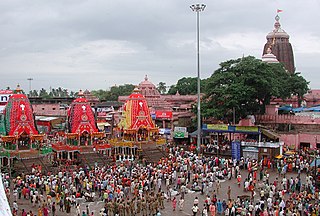
The Ratha Yatraof Puri, also rendered as the Ratha Jatra, is considered the oldest and largest Hindu chariot festival celebrated annually, on the bright half of the lunar month of Ashadh (June–July). The festival is held at the city of Puri, in the state of Odisha, India and associated with the deity Jagannath. During the festival, three deities are drawn by a multitude of devotees in three massive, wooden chariots on bada danda to Gundicha Temple whereby they reside there for a week and then return to the Jagnannath temple. This return trip is referred to as the Bahuda Yatra.

Subhadra is a princess of Dvārakā mentioned in the Hindu epic Mahabharata. She is the sister of deities Krishna and Balarama in Hindu mythology. Subhadra married Arjuna, one of the Pandava brothers and had a son named Abhimanyu.

Puri, also known as, Jagannath Puri, is a coastal city and a municipality in the state of Odisha in eastern India. It is the district headquarters of Puri district and is situated on the Bay of Bengal, 60 kilometres (37 mi) south of the state capital of Bhubaneswar. It is home to the 12th-century Jagannath Temple and is one of the original Char Dham pilgrimage sites for Hindus.

Shri Jagannath temple(Odia: ଶ୍ରୀ ଜଗନ୍ନାଥ ମନ୍ଦିର) is a temple located in Koraput, Odisha, India. It is not only built as an altar for worship, but also as a multipurpose area for Jagannath consciousness. Jagannath consciousness is the main theme of Jagannath which can not be confined within the limits of a traditional religious theological order, because it is a cult.

The Jagannath Temple is a Hindu temple dedicated to the god Jagannath, a form of Vishnu in Hinduism. It is located in Puri in the state of Odisha, situated on the eastern coast of India. As per temple records, King Indradyumna of Avanti built the main temple of Jagannath at Puri. The present temple was rebuilt from the tenth century onwards, on the site of the pre-existing temples in the compound, but not the main Jagannath temple, and begun by Anantavarman Chodaganga, the first king of the Eastern Ganga dynasty. Many of the temple rituals are based on Oddiyana Tantras which are the refined versions of Mahayana Tantras as well as Shabari Tantras which are evolved from Tantric Buddhism and tribal beliefs respectively. The local legends link the idols with aboriginal tribes and the daitapatis (servitors) claim to be descendants of the aboriginals. The temple is one of the 108 Abhimana Kshethram of the Vaishnavite tradition.
Mausimaa Temple is an ancient shrine located in Kulada, a village also contains the Bagh Devi temple, in Ganjam District of Odisha, India. It is about 8 km from Bhanjanagar.
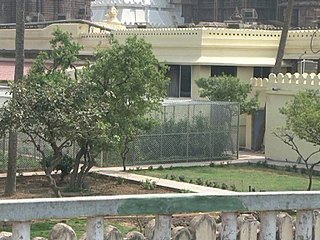
Nabakalebara also spelled as Navakalevara is the ritualistic recreation of the wooden icons of four Hindu deities at Jagannath Temple, Puri. The ritual is performed during the 8th, 12th, or 19th year after the previous Nabakalebara.
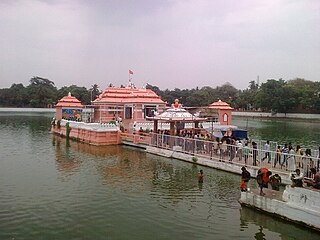
Chandana Yatra also known as Gandhalepana yatra is the longest festival observed at Jagannatha temple at Puri, India. Chandana Yatra meaning Sandalwood Voyage in Sanskrit, which continues for 42 days is observed in two parts: Bahara Chandana and Bhitara Chandana

The Snana Yatra, also spelt Snana Jatra, is a bathing festival of deities celebrated on the purnima of the Hindu month of Jyeshtha. It is the auspicious birthday of Jagannath.

Gundicha Temple, is a Hindu temple, situated in the temple town of Puri in the state of Odisha, India. It is significant for being the destination of the celebrated annual Rath Yatra of Puri. While it remains vacant most of the year, the temple is occupied by images of the deities of Jagannath, his brother Balabhadra and sister Subhadra for seven complete days every year during the annual Rath Yatra festival.

Baladevjew Temple is a Hindu temple in Ichhapur, Kendrapara, Odisha, India. Baladevjew (Balarama) is the main divinity. His siblings Jagannath and Subhadra are also worshipped in the Ratna Sinhasan in the main temple.

The Mausi Maa temple is situated at the mid-way of the Bada danda of Puri. It is a small temple dedicated to Goddess Ardhashini.

Shri Shri Hari Baladev Jew Bije is a famous Hindu temple located in Baripada, Mayurbhanj district, in the state of Odisha, India. The name Jagannath is a combination of the Sanskrit words Jagat (Universe) and Nath.

Ratha Yatra, or chariot festival, is any public procession in a chariot. They are held annually during festivals in India, Nepal and Sri Lanka. The term also refers to the popular annual Ratha Yatra of Puri that involves a public procession with a chariot with deities Jagannath, Balabhadra, Subhadra and Sudarshana Chakra on a ratha, a wooden deula-shaped chariot.
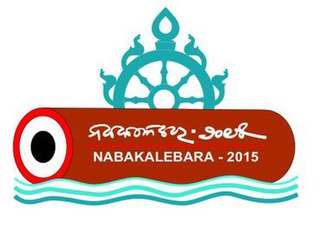
The Nabakalebara 2015 is a celebration of the ancient ritual of the Nabakalebara associated with most of the Jagannath Temples when the idols of Lord Jagannath, Balabhadra, Subhadra and Sudarshan are replaced by a new set of idols; the last such festival of events was held in 1996. The period of the festival is chosen according to the Hindu Calendar, conforming to the astrological planetary positions. The festival during 2015 involves several schedules, and it has started from 23 March with Banajaga Yatra and will conclude with Rathayatra followed Sunabesa on 27 July, with many other rituals being held in between on specific dates. More than 5 million devotees are expected to participate in these rituals held in and around the temple complex of the Jagannath Temple, Puri, Odisha.

Jagannath Temple, Rayagada, stands at the southern side of the town Rayagada. The temple was originally built more than 50 years back.
In Odia and Sanskrit, Besha means dress or adornment. Lord Jagannath and his siblings are adorned with different beshas throughout the year. Out of all beshas of lord Jagannath and his siblings, the Suna Besha, are held several times during a year. The all beshas of lord Jagannath and his siblings are listed below :

Dibyasingha Deba, known by the symbolic regnal title as Gajapati Maharaja Divyasingha Deva IV, is the current Gajapati Maharaja and the King of Puri. He is the current head of the house of Bhoi dynasty, who were the hereditary rulers of the ancient realm of Trikalinga, medieval era Khurda Kingdom and the rulers of the Puri Estate, with their current capital located at Puri. The Gajapati Maharaja is the current Adhyasevaka of Lord Jagannatha and among many rituals is involved in 'Chhera Pahara', the ritual involving the symbolic cleaning of the raths during Ratha Yatra (Puri). He is also the chairman of the Shri Jagannatha Temple Managing Committee of the Jagannath Temple at Puri.
